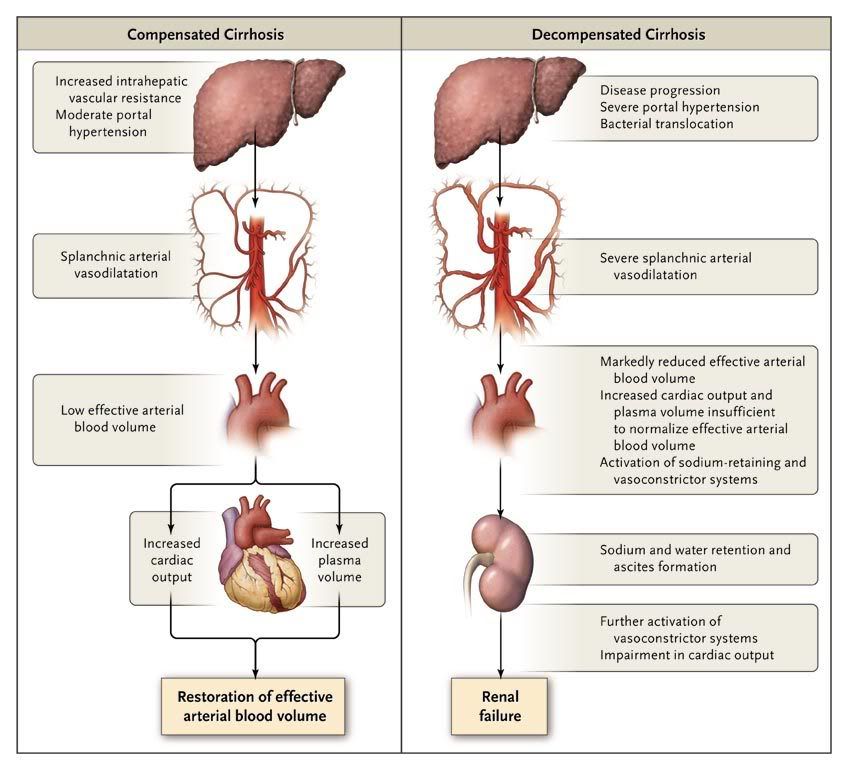資料來源:NEJM Volume 361:1279-1290

Figure 1. Pathogenesis of Circulatory Abnormalities and Renal Failure in Cirrhosis.
In compensated cirrhosis, increases in cardiac output and plasma volume can restore effective arterial blood volume. In decompensated cirrhosis, the activation of vasoconstrictor systems to maintain effective arterial blood volume leads to ascites formation and eventually to renal failure.

Figure 2. Potential Role of Bacterial Translocation and Cytokine Overproduction on Splanchnic Arterial Vasodilatation.
A number of factors, such as intestinal bacterial overgrowth, impaired intestinal motility, alterations in gut permeability, and disturbances in local immune systems, can lead to passage of aerobic bacteria from the intestinal lumen to the mesenteric lymph nodes. This translocation results in activation of monocytes with overexpression of toll-like receptors, activation of nuclear factor kappa B (NF- B), and increased local production of proinflammatory cytokines and vasodilator factors, such as nitric oxide. These cytokines and vasodilator factors cause further vasodilatation of splanchnic arterial vessels. In general, anaerobic bacteria do not translocate.
B), and increased local production of proinflammatory cytokines and vasodilator factors, such as nitric oxide. These cytokines and vasodilator factors cause further vasodilatation of splanchnic arterial vessels. In general, anaerobic bacteria do not translocate.





 留言列表
留言列表
 線上藥物查詢
線上藥物查詢 